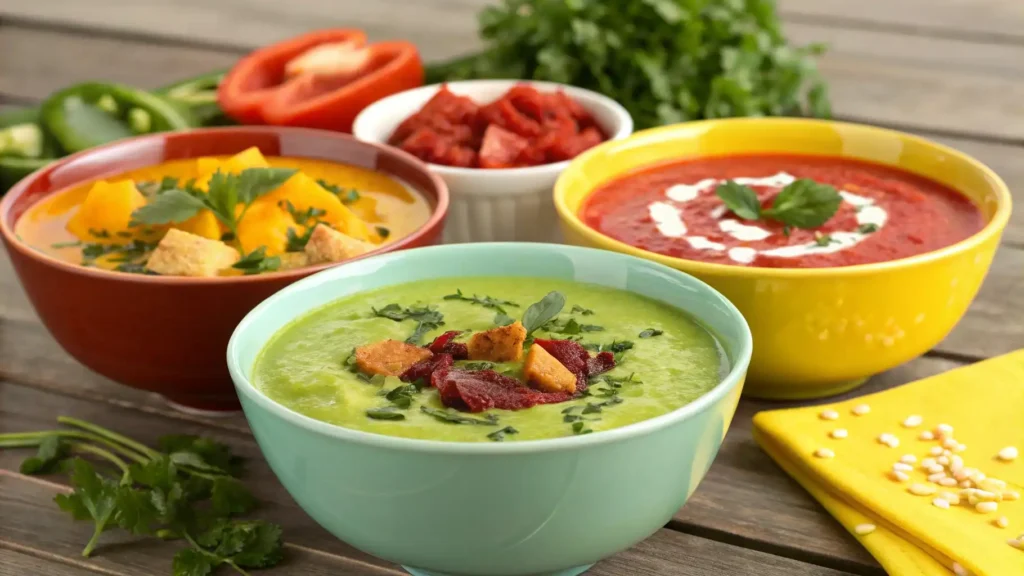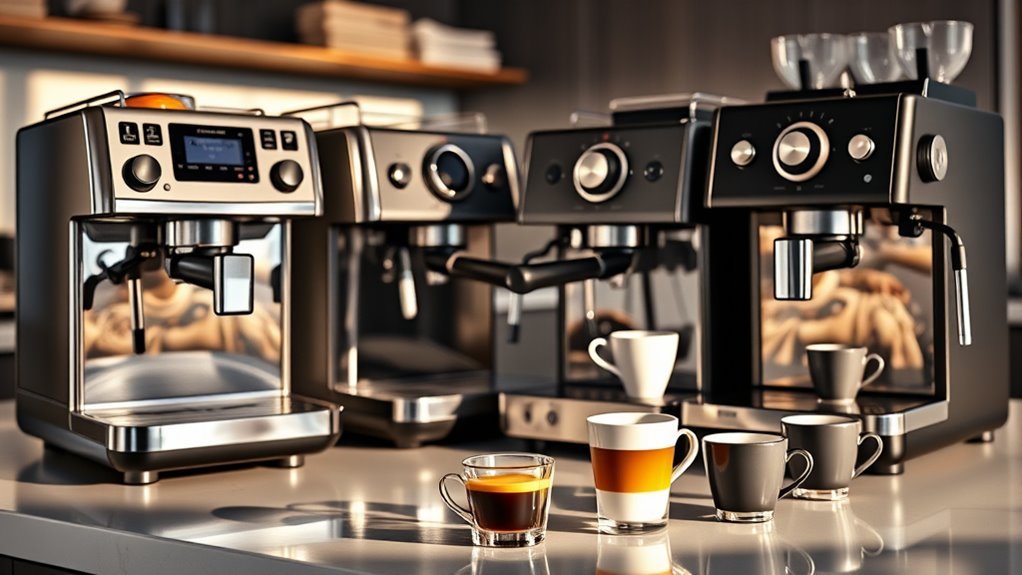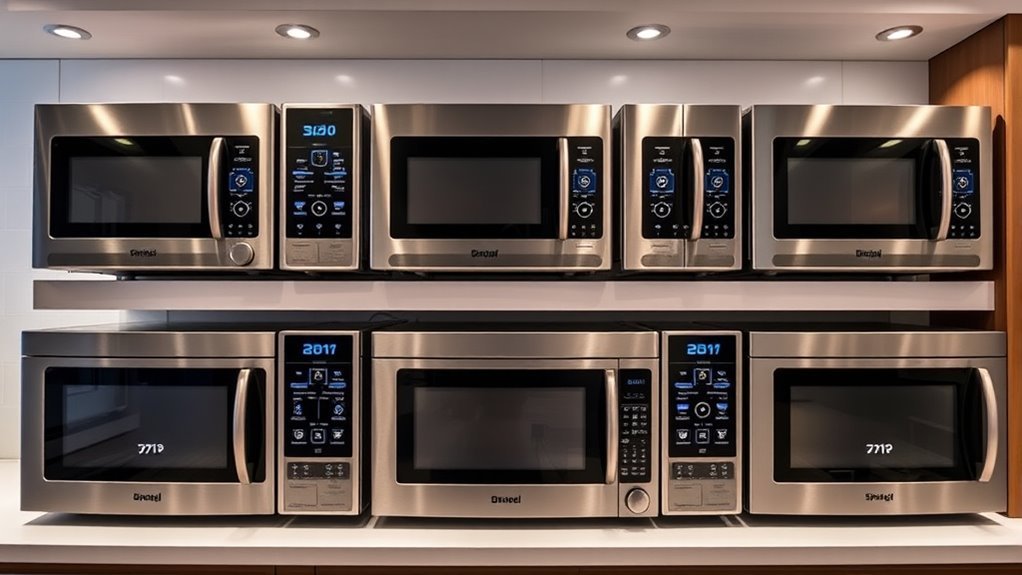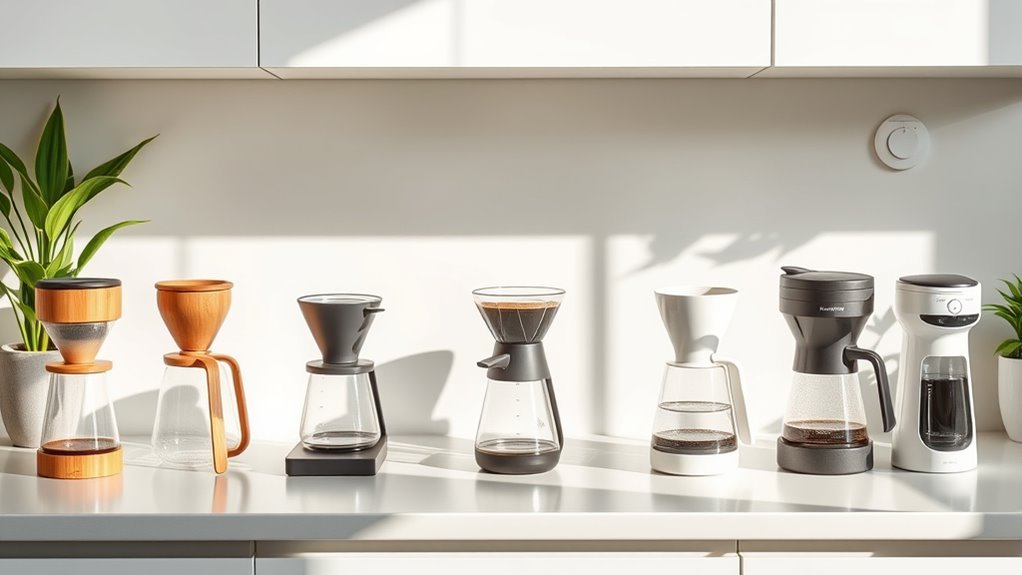
Welcome to Recipe By Liza, your go-to destination for delicious, easy-to-follow recipes that bring joy to every kitchen!
Created by Liza, a passionate home cook with a flair for blending flavors, this site is all about celebrating food that’s simple, hearty, and made with love.
From comforting classics to fresh, creative twists, there’s something here for every palate. Dive in, get inspired, and let’s cook up something wonderful together!
Latest Posts
- 8 Best No-Plastic Coffee Makers of 2025 That Are Eco-Friendly and Brew Deliciously
- 8 Best Coffee Makers for Coffee Shops in 2025, as Chosen by Industry Experts
- The 8 Best Coffee Makers for Campers in 2025 — Brew Perfect Coffee Anywhere
- 8 Best Capsule Coffee Makers of 2025 – Brew Perfect Cups Every Time
- 8 Best Coffee Makers for Camping Adventures in 2025, Perfect for Your Morning Fix Outdoors
- 8 Best Black Friday Coffee Maker Deals of 2025 You Can’t Miss
- 8 Best Coffee Makers of 2025, According to America’s Test Kitchen
- 8 Best Plastic-Free Coffee Makers in 2025 That Combine Sustainability and Style
- 8 Best Coffee Makers With Stainless Carafes in 2025 for Perfect Brew Every Morning
- 8 Best Coffee Makers With Burr Grinders in 2025 – Brew the Perfect Cup Every Time
- 8 Best Coffee Makers With Timers in 2025 – Brew at the Perfect Time Every Morning
- 8 Best Coffee Makers Under $50 for Savings in 2025: Budget-Friendly Brews You’ll Love
- 8 Best Stainless Steel Carafe Coffee Makers of 2025 You’ll Love
- 8 Best Coffee Makers for the Money in 2025 — Our Experts’ Top Picks
- 8 Best Coffee Makers for Small Offices in 2025 — Brew Perfect Cups Every Time
- 8 Best Coffee Makers for the Hottest Coffee in 2025—Brew Like a Barista
- 8 Best Coffee Makers for Hard Water in 2025 That Ensure Great Taste and Longevity
- 8 Best Coffee Makers for Airbnb Guests in 2025 — Brew Like a Pro and Keep Your Guests Coming Back
- 8 Best Coffee Makers With Milk Frother Features in 2025 — Brew Perfect Lattes Every Time
- 8 Best Coffee Maker and Grinder Combos to Save Time and Brew Perfect Coffee in 2025
- 8 Best Coffee Maker & Frother Combos of 2025 That Will Elevate Your Morning Brew
- 8 Best 10-Cup Coffee Makers in 2025 for Larger Brews — Brew More, Savor More
- 8 Best Coffee Makers With Removable Water Reservoirs of 2025 for Easy Brewing
- 8 Best Budget Coffee Makers Under $50 in 2025 for Coffee Lovers on a Budget
- 8 Best Coffee Makers Under $200 for Quality in 2025 You’ll Love
- 8 Best Percolator Coffee Makers for a Rich, Robust Flavor in 2025
- 8 Best Coffee Makers With Insulated Carafes in 2025—Brewing Freshness That Lasts All Morning
- 9 Best Coffee Makers for Iced Coffee Lovers in 2025, Reviewed and Rated
- 9 Best Coffee Makers for Home Brewing in 2025 — Brew Perfect Cups Every Time
- 9 Best Coffee Makers for RVs in 2025 — Brew Perfect Coffee on the Road
- 9 Best Coffee Makers for Hot Coffee in 2025 That Brew Perfect Cups Every Time
- 9 Best Coffee Makers for Perfect Espresso Shots in 2025—Barista-Grade Brews at Home
- 9 Best Coffee Makers With Stainless Steel Carafes in 2025 – Which One Reigns Supreme
- 9 Best Coffee Makers With Milk Frothers of 2025 — Brew Perfect Lattes Every Time
- 9 Best Coffee Makers With K-Cup Combos of 2025 That Brew Perfect Cups Every Time
- 9 Best Coffee Makers at Walmart for Value in 2025—Brewing Quality Without The Price Tag
- 9 Best Coffee Makers With Thermal Carafes of 2025 — Keep Your Coffee Hot for Hours
- 9 Best High-End Coffee Makers for Luxury in 2025 — Elevate Your Coffee Game With These Top Picks
- 9 Best Coffee Maker and Grinder Combos of 2025 — Brew Your Perfect Cup Every Morning
- 9 Best Coffee Makers for Camping in 2025—Brew Perfect Coffee Anywhere
- 9 Best Coffee Makers for One Person in 2025: The Ultimate Guide to Perfect Single-Serve Brews
- 9 Best Drip Coffee Makers for Classic Brews in 2025 — Brew Like a Pro
- 9 Best Coffee Makers With Frothers in 2025 – Brewing and Frothing Perfection
- 9 Best Pour-Over Coffee Makers for Precision in 2025: Brew Your Perfect Cup Every Time
- 9 Best Coffee Makers Leading the Market in 2025 — Your Ultimate Buying Guide
- 9 Best Coffee Maker and Grinder Combos of 2025 for Perfect Brew Every Time
- 9 Best Coffee Makers for Motorhomes in 2025: Brew Perfect Coffees on the Go
- 9 Best Coffee Makers for Ground Coffee in 2025: Brew Your Perfect Cup Every Time
- 9 Best Coffee Makers for Rich Flavor in 2025, According to Coffee Experts
- 9 Best Coffee Makers for Drip Coffee in 2025 – Brew Your Perfect Cup Every Morning
- 9 Best Coffee Maker Deals of 2025 to Save Big on Wake-Up Coffee
- 9 Best Barista-Style Coffee Makers for Home in 2025—Brewing Like a Pro Has Never Been Easier
- 9 Best Coffee Maker and Espresso Machine Combos of 2025 That Brew Like a Barista
- 9 Best 5-Cup Coffee Makers for Small Households in 2025 — Brew Perfect Mornings Every Day
- 9 Best Coffee Makers With Espresso Features in 2025 That Brew Barista-Quality Drinks at Home
- 9 Best Keurig Coffee Makers for Coffee Pods in 2025, Reviewed and Rated
- 9 Best Coffee Makers for Solo Brewers in 2025 – Brew Perfect Cups Every Time
- 9 Best Coffee Makers for Office Use in 2025 – Brew Perfect Coffee Every Time
- 9 Best Coffee Makers for K-Cups in 2025 — Brew Perfect Cups Every Time
- 9 Best Coffee Maker Descalers to Keep Your Machine Running Smoothly in 2025
- 7 Best Coffee Makers With Bean Grinders of 2025 — Brew Perfect Coffee Every Time
- 7 Best Coffee Makers Under $100 for Value in 2025 – Affordable Brews With Top Quality
- 7 Best Coffee Makers That Grind Beans in 2025 – Brew Fresh Every Time
- 7 Best French Press Coffee Makers for Rich, Bold Flavor in 2025
- 7 Best Coffee Makers for One Person in 2025 — Perfectly Brewed Every Time
- 7 Best Coffee Maker Espresso Combos for Your Home in 2025 — Brew Like a Barista
- 7 Best Combination Coffee Makers of 2025 for Versatility and Brew Quality
- 7 Best Coffee Makers With Built-In Grinders in 2025 — Brew Fresh Every Time
- 7 Best Coffee Makers of 2025: Expert Reviews to Help You Make Smart Choices
- 7 Best Coffee Maker Cleaners for Easy Maintenance in 2025
- 7 Best Coffee Makers Using Pods for Easy Brewing in 2025
- 7 Best 4-Cup Coffee Makers for Perfect Small Brews in 2025
Popular Posts
- Trifongo Recipe: Authentic Recipe for a Tropical Culinary Adventure

- The 9 Best Standalone Mixers of 2025 for Ultimate Flexibility

- The 9 Best Cordless Electric Tea Kettles of 2025 for Effortless Brewing

- The 9 Best Coffee Espresso Combo Machines of 2025 — Brew Perfectly Every Time

- The 9 Best Cake Mixer Machines for Baking in 2025 – Top Picks for Perfectly Fluffy Cakes

- The 8 Best Counter-Convection Microwaves of 2025 for Fast and Even Cooking

- The 8 Best Coffee Makers for Campers in 2025 — Brew Perfect Coffee Anywhere

- The 8 Best Belgian Waffle Makers With Removable Plates in 2025 — Perfect Crisps and Easy Cleanup

- The 8 Best 900-Watt Microwaves of 2025 for Quick and Efficient Cooking

- The 7 Best Stand Mixers for Home Use in 2025 — Top Picks for Effortless Baking

- The 7 Best Small Coffee Makers for Compact Kitchens in 2025—Perfect Brew Sizes for Tiny Spaces

- The 7 Best Sauté Pans for Versatile Cooking in 2025—Top Picks for Every Kitchen

- The 7 Best Mixers for Smoothies in 2025 — Blend Your Perfect Drink With Ease

- The 7 Best Hand-Crank Coffee Grinders of 2025 — Expert Picks for Perfect Mornings

- The 7 Best Coffee Maker Machines for Perfect Cups in 2025—Brew Like a Barista

- The 7 Best Chai Tea Latte Machines for Home in 2025

- The 7 Best Blenders for Thick Smoothies in 2025 — Unmatched Power and Creaminess

- The 7 Best 2-Qt Air Fryers for Small Portions in 2025 — Compact and Delicious

- The 7 Best 1100-Watt Microwaves for Quick Heating in 2025—Fast and Reliable Options

- The 5 Best Mixers on the Market for Performance in 2025 — Unbeatable Power and Precision

- The 4 Best Frappuccino Makers for Creamy Drinks in 2025 — Blending Perfectly Every Time

About Author

Hi, I’m Liza Jensen, your culinary companion here at Recipe by Liza. 








































































